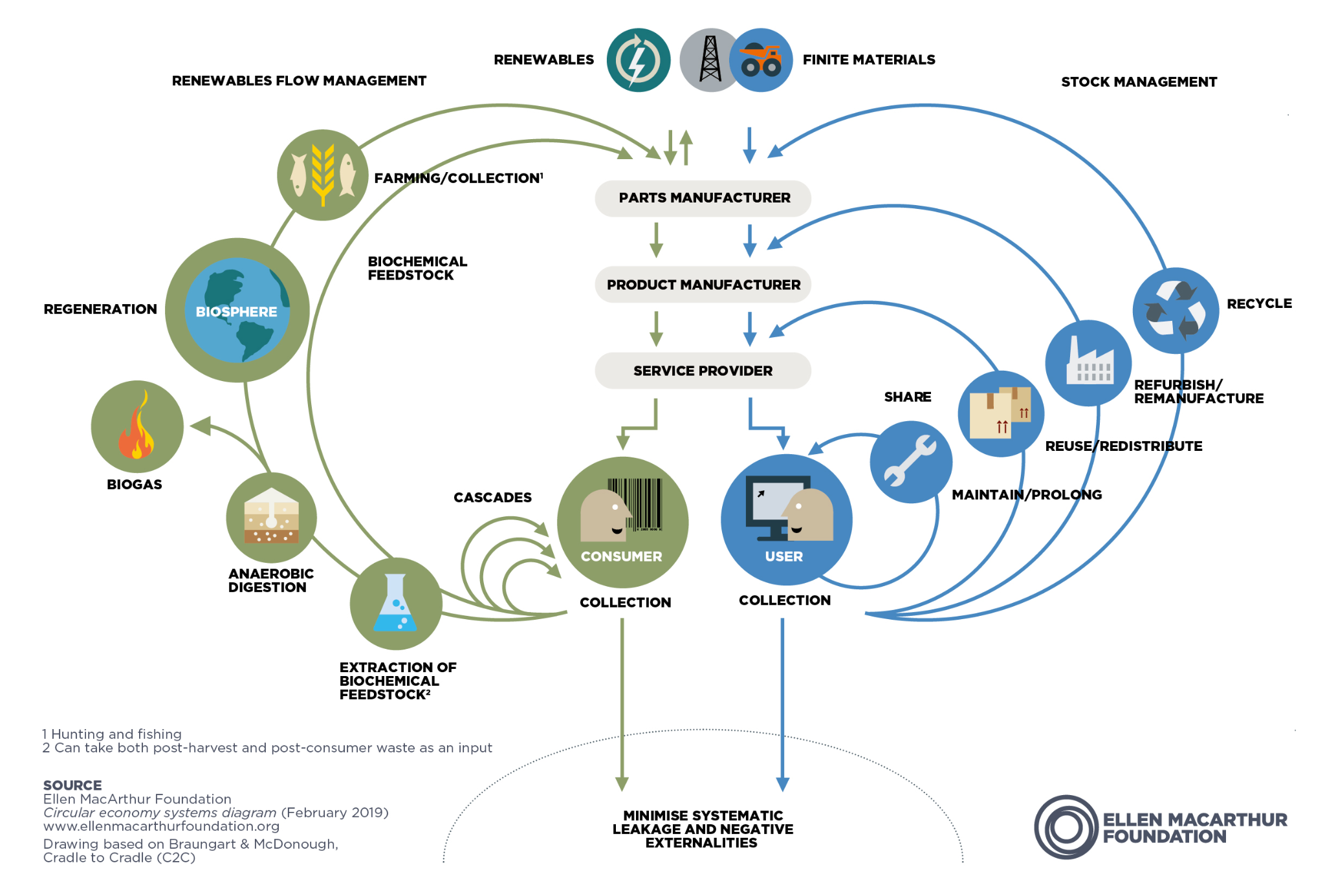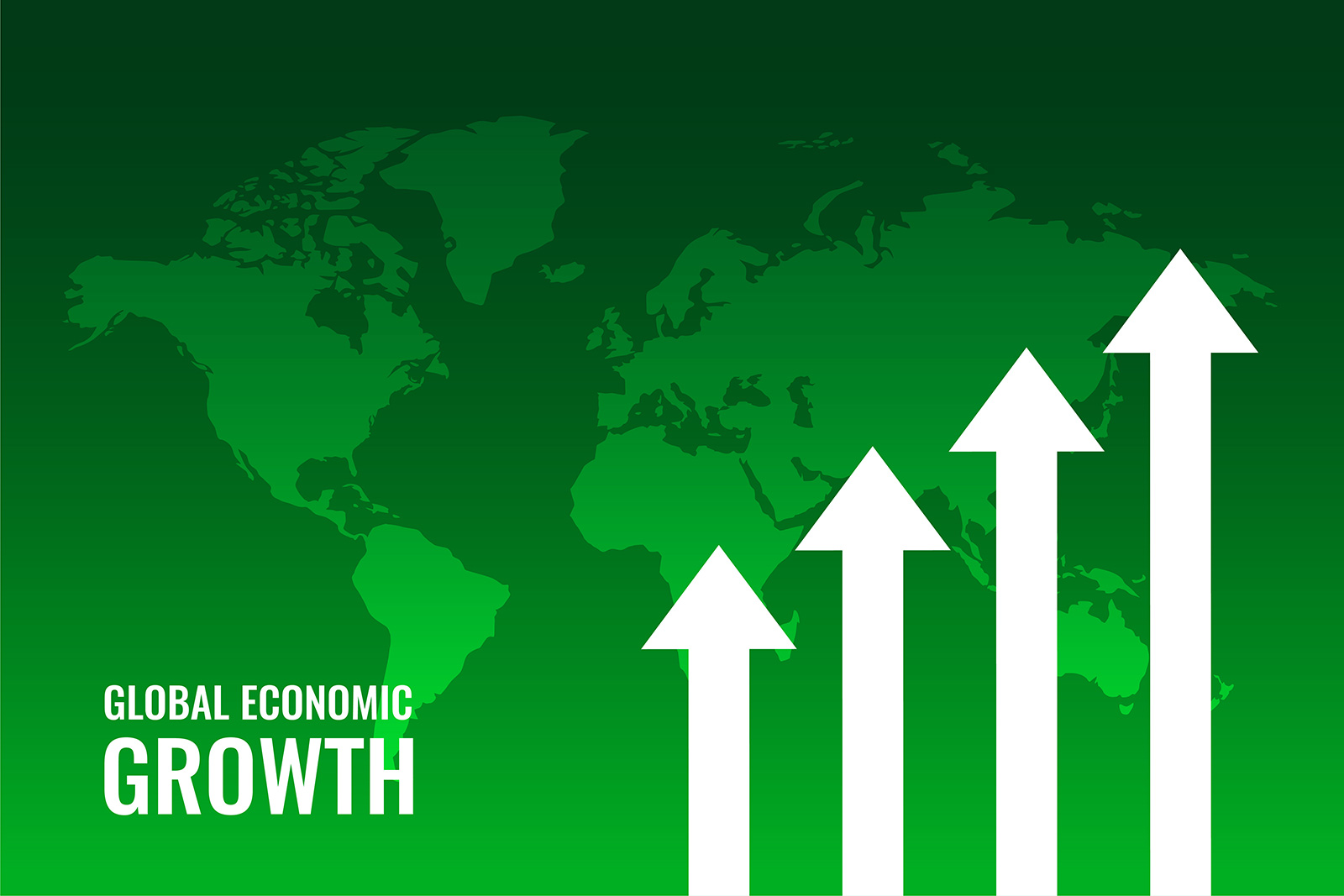What is the Circular Economy?
Our human endeavours in the last 250 years have significantly improved life on earth. Just consider life expectancy has moved from an average of 47 years in England in the 1900’s to over 80 years in 2020. Children today have a 10-fold better life expectancy than one hundred years ago, when one of two children died prematurely. The GDP per capita has grown on average by 1.9% per year since the 1960’s. Along with this economic activity, our manufacturing and resource usage have expanded as consumers demand increased convenience, production processes, and service. There is a heavy price to pay for such an economic growth; Planet Earth, our most precious asset, bears the burden. As we use non-renewable resources, we take, make and dispose. This is known as the linear economy.
While the linear economy does not favour using renewable resources, the circle economy targets balancing the use of natural resources and the conservation of the environment. Linear economy business models tend to use up non renewable energy sources, which speed up global warming and climate change. Extreme weather, losses of eco systems and endemic species are common. Human activities have increased greenhouse gas emissions in the atmosphere. The evidence is in the headlines, constantly reporting devastating wildfires, droughts, and floods. Unless we change our consumption behaviour from linear economy to the circular economy model, by 2050 we will need the equivalent of three planet earths to sustain our world. The entire value chain needs changing. Aside from greenhouse gas emissions, pollution makes matters worse. Micro plastics have devastated the environment and the ocean. The linear economy has not prioritized the retention of precious resources. In contrast, adopting the circular economy is vital for human lives.
Adopting the circular economy model
What can we do as consumers? More responsible consumption habits are crucial. Indeed, one’s waste is another’s resources; thus, plant and animal life living in balance and harmony. The concept of circular economy is closely related to the circular economy principles of environment conservation and renewable resources. The Ellen McArthur Foundation has developed, from Braungart and McDonough’s thinking in Cradle to Cradle, the butterfly model which illustrates nature’s continuous flows of resource.
What is the Butterfly Model?


Source: Ellen Mac Arthur Foundation
Using product and discarding it, usually to landfill, generates carbon emissions and methane, leading to global warming. It destroys the value that went into creating the product, be it the precious minerals that make up our mobile phones, the oil resource that generates the plastic packaging that preserves and delivers hygiene for our food, or the labour and energy to make the product. This is known as the linear economy or ‘Take, make and dispose.’ Such an economic model is a waste for the entire value chain. Thus, it is vital to reshape production and consumption through a transition to the circular economy. Understanding the principles of circular economy helps us to adopt an original approach to reduce waste while retaining value. The Butterfly model envisages keeping products and materials in circulation through re-use, repair, re-manufacturing, and recycling, whilst the nutrients from biodegradable materials return to Earth to regenerate nature.
Natural resources in production
In contrast to the linear economy, which is our current way of living, the circular economy involves reducing waste by retaining value in products and materials for more sustainable development. The circular economy consists in reducing single usage, from raw materials to energy. Renewable sources for energy such as wind power and solar panels are among the most common examples of renewable resources. Shifting towards the circular economy is the only way to regenerate natural systems and ensure sustainable growth.
How do we retain the value of products? By re-using containers, repairing clothes, and recycling electronic items. What if we reduced our food waste and composted the residual instead of sending it to the waste bin? Consider that our family cars spend 94% of the time parked, and have an average life of 12 years, think about carpooling, leasing, or using public transportation to get around. Fast fashion is another significant contributor to microplastics in the environment. Consider choosing garments for quality, style, and longevity instead of discarding the T-shirt or pants after one season. Adopting circular solutions in the economic system saves natural resources.
A strategy for more sustainable economic growth


Responsible consumption eliminates any disposable and less sustainable items. It requires making informed choices. Take food packaging for instance. Packaging contributes to 36% of global plastic production with another 15% in textiles. Packaging helps preserve foods and keep it hygienic. Avoiding excess packaging and recycling means less waste in landfill. Recycling is of value if the recyclable materials are clean and properly segregated. Look for the recycling logo on packs and act. Processing recyclable materials locally is essential. Simply shipping recyclable materials to dumps in a second country is not the path to economic development.
We also cannot simply exchange one type of material for another. Exchanging disposable plastic bags for single use paper bags is considered sustainable. Both materials can be recycled, however, the environmental cost of paper production is much higher than plastic especially in single use applications. A shopping bag made of recycled materials can be reused many times and has further value than any disposable paper or plastic bags. Recycling existing materials helps extend the life cycle of finite resources, and this, in turn, promotes sustainable economic development.
Raw materials in circular business model innovation
Nowadays, the trend is to boost sustainable development through bio plastics. Circular economy aims at using and reusing plastic polymers from plant sources. Circular economy projects enable plant-based plastics, representing 2% of all plastics used nowadays, when derived from the by-products such as sugar cane and corn husks are a sustainable and renewable source of packaging. Sourcing bioplastics from corn or soya plants, if it comes at the expense of water and land usage for crops for human consumption or by clearing forests, then bioplastics are not a sustainable solution for our plastic needs. The basic principles of circular economy involve using raw materials for the benefit of the environment. The circular economy model aims at eliminating waste; it also enhances global economy through material recovery and preservation of embedded energy.
Human activities generate waste, but this can be reduced if we make more informed choices around our production and consumption habits. Waste management behaviour is essential to prevent waste from harming the ecosystem. Environment conservation requires changing the economic system. Opting for the circular economy approach enhances reducing, reusing, repair and recycling and boosts the global economy. The circular economy focuses on renewable resources, avoiding waste and keeping energy, labour, and materials in circulation as long as possible. The circle economy triggers economic growth by delivering on regeneration and therefore saving non-renewable resources. For sustainable growth, sustainable business models are crucial despite being complicated. We are the generation that makes a difference and can promote the circular economy when we make the right choices. Choosing circular principles leads us to re-think our consumption habits, to reduce, reuse, and repair thus avoiding generating waste.
